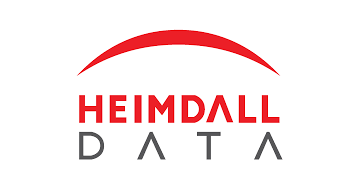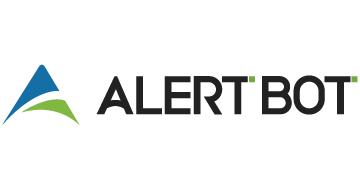
| Starting price | $49/month |
|---|---|
| Pricing model | Subscriber based |
| Free Trial | Yes |
| Free Version | No |
Are you ready to take your application performance to a new level? We present you with a list of the best value application performance monitoring software out there.

| Starting price | $49/month |
|---|---|
| Pricing model | Subscriber based |
| Free Trial | Yes |
| Free Version | No |

| Starting price | $900/mo |
|---|---|
| Pricing model | Subscriber based |
| Free Trial | Yes |
| Free Version | Yes |

| Starting price | $35/mo |
|---|---|
| Pricing model | Subscriber based |
| Free Trial | Yes |
| Free Version | No |

| Starting price | $110/mo |
|---|---|
| Free trial | Yes, 14 days |
| Free version | No |
Application performance monitoring (APM) software is a comprehensive suite of development tools designed to track, analyze, and optimize the performance of application software across your entire technology stack.
These solutions provide end-to-end visibility into application health by collecting telemetry data including response times, error rates, resource usage, and user behavior patterns.
Modern APM platforms leverage cloud-based monitoring capabilities to detect anomalies automatically and present actionable insights through intuitive dashboards. Teams receive immediate alerts when specific issues are identified, enabling proactive problem resolution before end-users experience disruptions.
Unlike basic monitoring solutions, enterprise-grade APM software offers distributed tracing, code-level diagnostics, and AI-powered root cause analysis to pinpoint performance bottlenecks quickly across complex, distributed systems including microservices and serverless architectures.
Track critical metrics like response times, throughput, error rates, and resource consumption in real-time. Advanced solutions provide automated baselining to establish normal performance patterns and detect deviations instantly.
Follow individual transactions across multiple services, databases, and third-party integrations. This capability is essential for understanding complex application flows in microservices architectures.
Analyze execution time and resource consumption of specific methods, code lines, and threads. This granular insight helps developers identify performance bottlenecks at the source code level.
Monitor underlying infrastructure including servers, containers, databases, and network performance. Comprehensive solutions track CPU usage, memory consumption, disk I/O, and network latency.
Track real user monitoring (RUM) metrics including page load times, First Contentful Paint, Largest Contentful Paint, and Cumulative Layout Shift to ensure optimal end-user experiences.
Modern APM platforms use machine learning algorithms to detect anomalies, predict potential issues, and provide intelligent root cause analysis.
| Solution | Best For | Key Strengths | Starting Price | Free Tier |
|---|---|---|---|---|
| Auvik | Network-focused monitoring | Automated discovery, real-time network mapping | $150/month | 14-day trial |
| Motadata | AI-powered IT analytics | AIOps platform, automated incident management | Custom pricing | Free trial available |
| NinjaOne | Remote monitoring & management | Endpoint management, automated patching | $3/month per device | Free trial |
APM tools detect anomalies early, preventing costly outages and service disruptions before they impact end users. This proactive approach significantly reduces mean time to resolution (MTTR) and maintains service level agreements.
By providing code-level insights and automated error tracking, APM solutions enable development teams to identify and fix bugs faster. Teams can replay user sessions to understand exactly how issues occurred, eliminating guesswork in debugging processes.
APM provides detailed insights into resource consumption patterns, helping organizations optimize infrastructure costs and improve application scalability.
By maintaining optimal application performance and preventing downtime, businesses ensure seamless digital experiences that drive customer loyalty and retention.
Comprehensive performance analytics enable IT teams to make informed decisions about architecture changes, capacity planning, and technology investments based on real usage patterns and performance data.
Establish Service Level Objectives (SLOs) and Service Level Indicators (SLIs) to set clear performance targets and measure success. This approach enables teams to focus monitoring efforts on business-critical metrics.
Deploy monitoring across the entire application stack, including:
Set up customizable alerts with smart thresholds to reduce alert fatigue while ensuring critical issues are escalated promptly. Use alert correlation to group related notifications and provide contextual information for faster resolution.
Modern APM platforms include collaboration features that connect development, operations, and business teams. Quick access to service owners, on-call engineers, and runbooks accelerates incident response.
| Business Size | Typical Monthly Cost | Recommended Solutions | Key Considerations |
|---|---|---|---|
| Startups | $200-$500 | SigNoz, Prometheus + Grafana | Open-source options with community support |
| SMBs | $500-$2,000 | eG Enterprise, ManageEngine | Balanced features and affordability |
| Mid-Market | $2,000-$10,000 | Datadog, New Relic | Comprehensive feature sets with scalability |
| Enterprise | $10,000+ | Dynatrace, AppDynamics | Advanced AI, automation, and enterprise support |
Pricing factors include:
Modern APM solutions provide native support for containerized environments, offering visibility into pod performance, resource allocation, and orchestration layer metrics.
Track performance of AWS Lambda, Azure Functions, and Google Cloud Functions with specialized monitoring capabilities that account for cold starts, execution duration, and invocation patterns.
Distributed tracing becomes essential for understanding request flows across multiple services, helping teams identify bottlenecks and optimize inter-service communication.
Modern APM platforms integrate seamlessly with continuous integration and deployment workflows. Teams can correlate application performance with code deployments, feature flag changes, and configuration modifications.
When evaluating APM solutions, consider these essential factors:
Technical Requirements
Business Considerations
For organizations already using IT management software or network monitoring solutions, APM software provides complementary application-layer visibility that enhances overall IT operations visibility.
Advanced analytics and machine learning are making issue detection smarter and faster, with AI-powered systems capable of predicting failures before they occur.
OpenTelemetry support is becoming increasingly important as it provides vendor-neutral instrumentation and makes it easier to switch between monitoring solutions.
As applications distribute across edge locations, APM solutions are expanding to provide visibility into edge infrastructure performance and user experiences from distributed points of presence.
Application performance monitoring is integrating with AIOps platforms to provide automated remediation, intelligent incident correlation, and predictive maintenance capabilities.
For businesses seeking comprehensive visibility, combining APM software with employee monitoring solutions provides both technical and operational insights to optimize overall business performance.
Modern application performance monitoring has evolved from simple uptime checking to comprehensive observability platforms that provide business-critical insights. By implementing the right APM solution and following established best practices, organizations can ensure optimal application performance, enhanced user experiences, and improved business outcomes in today’s competitive digital landscape.